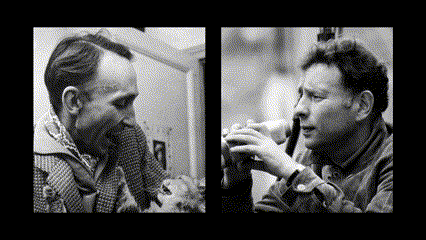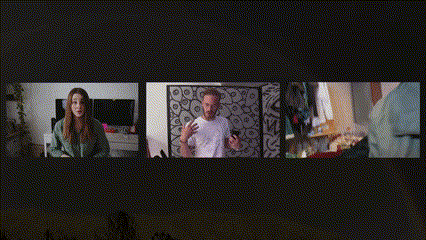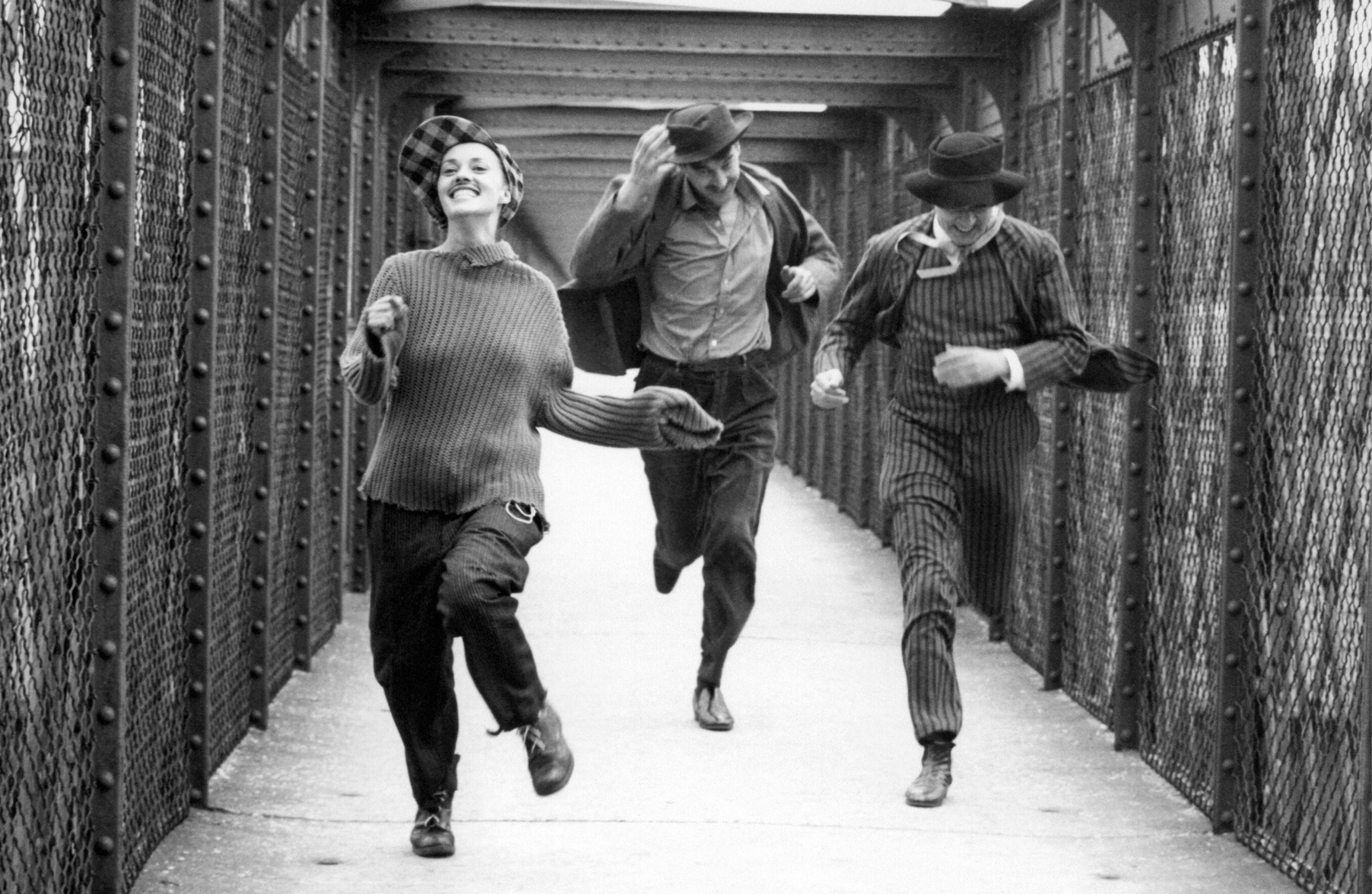The full video essay is available to HieronyVision members!
Whether you’re a film snob or a digital native, a good old-fashioned troll or a new-fangled edgelord, you might as well get ready to shitpost, because we’re comparing the French New Wave, cinema’s most well-known and artistically significant movement, to YouTube. Don’t say we didn’t warn you. And no, we’re not comparing a film movement to a business, so you can stop right there. We don’t mean YouTube as the Google Alphabet Google-owned video uploading site and streaming service that’s probably where you watched the accompanying video, but as a shorthand for the whole environment of web content creators. You know how some people refer to all carbonated, sugary beverages as Coke? That’s basically how we’re going to use YouTube. Okay, if you’re still with us and not spewing your rage into the comments section or making an uninformed response video, there are quite a few practical similarities between the two, with just one very important difference that’s kept the viral platform from becoming a fully realized movement.

Histoire du Vague
First off, a little background on the French New Wave, and if you want even more information, we recommend you check out ChannelCriswell’s excellent breakdown of the movement, or just take a look at the page on our old friend WikiPedia. The French New Wave came out of the Cahiers du Cinema, one of the earliest and most respected publications devoted entirely to film culture. Cahiers was the one of the few places in the 1950’s where people studied and thought about movies non-stop. Co-founded by the brilliant film critic and theorist Andre Bazin, the journal emphasized cinema’s ability to capture a unique reality and present a director’s artistic vision; as he wrote, “The filmmaker today is at last equal to the novelist.” Under Bazin’s influence, Cahiers also employed a lot of young people. Not only were these younger writers like Francois Truffaut and Jean-Luc Godard serious film junkies, but they had also grown up with modern cinema as a part of their everyday lives. You know how today’s YouTubers have had streaming media and viral videos since as far back as they can remember? That was how the French New Wave felt about movies. And they really thought about movies.
Thinking about movies…
Or consider what Alexandre Astruc wrote in “The Birth of a New Avant-Garde: The Camera-Stylo” – in case you’re wondering, Camera-Stylo basically means the camera as a pen: “The cinema of today is capable of expressing any kind of reality. What interests us is the creation of this new language. We have no desire to rehash those poetic documentaries and surrealist films of twenty-five years ago every time we manage to escape the demands of a commercial industry. Let’s face it: between the pure cinema of the 1920s and filmed theatre, there is plenty of room for a different and individual kind of film-making.”
Okay, so technically this isn’t the founding proper of the French New Wave, but Astruc hits the key tenets that the Cahiers du Cinema and its group of critics-turned-creators expanded upon and turned into a torrent of films with a distinctive voice and style. Does that last part sound a little familiar? At least on paper, it would seem that the explosion of content in new media platforms like YouTube could be seen as a kind of movement, and it has launched new visual styles and genres like vlogs, memes, or even video essays composed largely of clips from other sources [see: embedded clip].
French New Tech
And the analogy can stretch even further. Directors like Godard and Truffaut were able to do what they did because they had access to newer, easier, and most importantly cheaper, means with which to make their content. More portable, handheld cameras like the Arriflex and the Eclair NPR with newer film stocks that held both video and audio allowed them to take films outside of a studio and shoot on a crowded street or inside of a car using only available light sources. In a time when the average cost of a film was around $300,000, filmmakers like Agnès Varda were able to produce films for a tiny fraction of that cost. All this certainly made for a more naturalistic and energetic vibe in the final product, opening the door to experimentation with editing, camera movements and most importantly, storytelling. The newer and easier technology allowed directors to experiment and get further away from they called their father’s, or even grandfather’s, cinema.
This is not your grandparents’ cinema.
Today, the capabilities of modern equipment have not only made things even easier on the production side, but also on the distribution side as well. And with a platform like YouTube, the barriers between creator and audience are virtually nonexistent. Forget about breaking the fourth wall. It’s been totally obliterated.
Cuts, Jumps & Pranks
What’s even more interesting is that, whether or not YouTubers know it, some of the techniques pioneered by the French New Wave directors – jump cutting, innovative camera movements, audience interaction – quite literally pop up in their videos today. So it’s not to say that at least practically speaking, we aren’t in a “new wave” of filmmaking ourselves. There’s plenty of experimenting happening on YouTube. Godard believed that cinema is truth at 24 frames per second. If he’s right, YouTube now allows us to create and stream our own truths everyday, requiring little more than a smartphone and a network signal – and maybe that’s why Godard released Film Socialisme on the platform for free. But is there more to “life” than “likes”, or even positive comments unlike the ones we’re sure to receive for this video? The French New Wave wasn’t about popularity, and it definitely wasn’t about breaking box office records. As cinema-obsessed and self-referential as the movement was, it also wasn’t about making film for film’s sake.
Let’s take a look again at Astruc’s quote, but this time, through a contemporary lens, some of the key statements are still very true.
“The cinema of today is capable of expressing any kind of reality.”
True! The vlog and even its parodies like lonelygirl15 give us a very intimate glimpse into someone’s reality (or publicity seeking hoax version of reality). And the fact that they’re typically shot and edited by the subject makes this type of content a successful experiment, at least culturally speaking.
“There is plenty of room for a different and individual kind of film-making.”
Again, true. Today, anyone can make a video, and do pretty much whatever they like, ranging from a carefully crafted character study about a pot delivery guy in New York to an over-the-top reaction over to a meteorological phenomenon. So what is keeping all of this new content from being a fully realized movement?

The directors of the French New Wave were compelled by a quest for truth and reality through cinematic form. They gave us things like Cinema Verité, whose offspring could be seen as the vlog, but what exactly motivates something like the vlog? Sure, we get a dose of reality, but do things such as likes, comments, and views fully justify why that type of content is being made?
There’s actually more to Astruc’s quote:
“The film-maker/author writes with his camera as a writer writes with his pen. In an art in which a length of a film and sound-track is put in motion and proceeds, by means of a certain form and a certain story (there can even be no story at all – it matters little), to evolve a philosophy of life, how can one possibly distinguish between the man who conceives the work and the man who writes it?”
Move It, YouTube!
What distinguishes a film movement from mere experimentation are the theories and philosophies created by and from that experimentation. The French New Wave directors were experimenting, but even when it seemed like they were pulling stuff out of their derrieres, they were actually taking risks based on their philosophical outlook towards cinema. For example, the main character of Godard’s Breathless played by Jean Paul Belmondo breaks the fourth wall, talking directly to the audience, and also models his image after the real-life film actor Humphrey Bogart. For Godard, this speaks to his belief that cinema can engage the audience in new ways, and also how film’s role as a mass media has already changed our everyday lives. And again, while the French New Wave directors definitely loved movies, they still arrived at these philosophies by studying not just films, but poetry, literature, art, history, and politics. They loved to read as much as they loved to watch – so if you viewed our video and are also reading this article, that’s a French New Wave level up. Take a film like Jules and Jim, for example. It’s a story about a love triangle between three friends, but it’s also about the social upheaval and historical unrest in the early 20th century. How do we know this? Because director Truffaut edited newsreel footage from events like World War I and the onset of Nazi Germany into the actual film. Or how about Agnes Varda’s Cleo From 5 to 7? It’s a look at a day in the life of a self-absorbed pop singer, basically the premise of thousands of YouTube videos – except it also deals with issues of mortality, feminism, and even the controversial French war in Algeria. Their experiments were pointing to a bigger picture: the undeniable truths of their times.
Thinking about making a bold artistic statement.
Now, not every YouTube video has to make a bold social or political statement, and for that matter, not every film from the French New Wave actually does this either. But now that everyone can film themselves talking, do we know who actually has something to say? For that matter, we’re not even sure what’s going on in about 75 percent of this video essay. Not to say there aren’t some interesting voices out there. We’ve already alluded to “High Maintenance”, which despite starring its co-creator Ben Sinclair, serves as a wider examination of New York’s fringes of humanity. The web series “My Life in Sourdough” takes a cue from YouTube’s obsession with gourmet culture, but creator Marie Constantinesco goes well beyond presenting glorified images of food. There are certainly people hitting a few harmonic notes amidst all the noise. As the video essayist Nerdwriter points out, the vlogger Casey Neistat implements a lot of sophisticated film techniques to do more than talk directly to the camera for five minutes.

So why then haven’t these types of projects served as the jumping off point for a real artistic movement in new media? If modern movements are defined by their technological experimentation and ideologies, then perhaps we’re in an era deafened by experimentation, and unmoved with the lack of philosophical conviction. A lot of early pioneers on YouTube showed how it could be a path to fame and fortune. And if that’s your thing, there’s nothing we can do to stop you – everyone’s got to put food on the table, even if those meals arrive courtesy of sponsored content for Taco Bell. But perhaps the philosophers just need some time to catch up with the pace of technology. Beginning with the world’s first ever viral video, the Roundhay Garden Scene, cinema had existed for almost 70 years before the French New Wave. We’re not faulting YouTube because it hasn’t done more to revolutionize video as a medium, just arguing that the potential is there. So how could new media become a new wave? A lot of people might point to YouTube’s ability to convey authenticity. And actually, that’s pretty similar to what Andre Bazin said about film way back when. But how many of us have actually considered what authenticity means? Or why it’s important? Or what it might tell us about the state of the world that we seem to crave it like a delicious Taco Bell Doritos Locos taco at 2am? Now that making a film really is as easy as point and shoot, there might more time to think. About what? Well, that’s really up to you.
Image Credits
Jules and Jim, 1962. Dir. Francois Truffaut
Jean-Luc Godard at Berkeley, 1968 by Gary Stevens
Movie Phone by Claudia Dewald from Pixabay
YouTube Woman by Gerd Altmann from Pixabay
